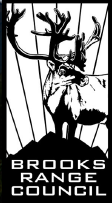Researchers shows that the Western Arctic herd is choosing a traditional route which passes the Red Dog mine and the 52 miles of road that link it to the ocean. Jim Dau’s research explains that caribou encountering the mine and road often eddy above the road as they decide how and when to cross it and their movement is slowed. The mine road also blocks hunter access. So locals must trade the income from the mine for access to caribou and hunting grounds.
The proposed road to the Ambler Mining District would be 220 miles long and closed to private use as currently proposed.
“Longtime wildlife biologist Jim Dau also studied the issue and concluded in 2013 that initial data indicated caribou changed their migration direction when they came in proximity with the road. While they eventually crossed the road, collared caribou first changed direction, some migrating as far northwest as Point Hope, before returning to the road. Once they crossed the road, they moved more quickly for the rest of their migration…”
“This year, after years of declining population numbers, the state placed bag limits and season length restrictions on caribou harvest in Western Alaska for the first time in three decades.
The Western Arctic herd is Alaska‘s largest and at last count numbered at about 235,000 animals in July 2013, Dau said. That’s a decrease from 325,000 caribou estimated in 2011, and well below the 2003 peak of 490,000…”
